
views
Using Over-the-Counter and Natural Remedies

Try a non-prescription scar treatment cream to shrink boil scars. Squeeze out a small dollop of scar cream onto 1 finger and rub it into your boil scars. When it’s fully rubbed in, the cream should be absorbed into the scar tissue. If the cream is visible after you’ve rubbed it in, you’ve probably applied too much. Leave the cream in place for 3–5 hours before washing it off, unless the product packaging directs otherwise. You can apply scar treatment cream to boil scars anywhere on your body. Be sure to let the boil heal fully before applying the cream, though. Common brands of scar treatment gels include NewGel, BioCorneum, and Kelo-cote. These products are designed to shrink scar tissue and to lighten its appearance. Many scar gels also contain medium-SPF sunblock. The sunblock will help protect your scars from being damaged and darkened by sunlight.

Apply silicone gel to the boil scar to lighten its appearance. Squeeze a generous dollop of the gel into 1 hand and spread the gel across your boil scar tissue until it’s covered in a thick layer of gel. Wait 4–5 minutes for the gel to dry before putting any clothing or covering over the scars. In most cases, you only need to apply silicone gel twice per day. Continue using the gel twice daily until the boil scar shrinks in size and loses its raised texture. Silicone gel has no side effects and does not cause pain when it’s applied to scar tissue. Silicone gel works slowly. In most cases, you’ll need to apply the gel for at least 6 months before you begin to see results. While this may feel like a discouraging amount of time to wait, don’t give up! Silicone products work well and are very effective, so you’ll likely be happy with the results. If you don’t see results within 9-10 months, ask your doctor if another treatment method would be more effective. Silicone gel is widely sold at drugstores and pharmacies. You can also check for it in the pharmacy section of a large supermarket. You can also tape a silicone gel sheet on the scar for 12-24 hours per day for 2-6 months. Wash the sheet daily and replace it with a new one every 10-14 days.

Use a pressure garment to help reduce scarring. Get a pressure garment or bandage that has at a rating of 20-30 mmHg. Put the garment on for 12-24 hours per day for 2-6 months to reduce the size of the scar and prevent the risk of recurrence after any surgical excisions.
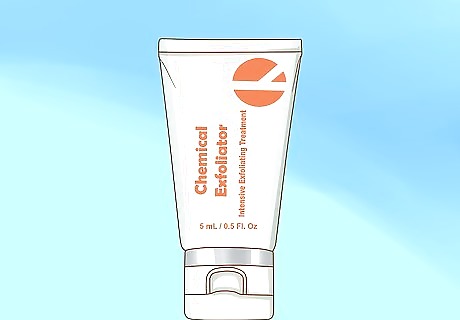
Use a chemical exfoliator to flatten out raised boil scars. Chemical exfoliators are usually sold over the counter, so you can purchase a chemical exfoliator at your local drugstore. Squeeze out a dime-sized dollop onto a fingertip, and rub the serum into your boil scar. The exfoliator cream should form a thin layer over the scar when it’s properly applied. Repeat 2–3 times daily (or as suggested on the packaging), and you should see the scar becoming smaller and less noticeable. Look for skin creams and exfoliating serums that contain either glycolic acid or a combination of salicylic-mandelic acids. Chemical exfoliating creams may cause discomfort on sensitive skin (e.g., around your mouth or eyes). If you feel a burning sensation when you apply the exfoliator, stop using this treatment method immediately.
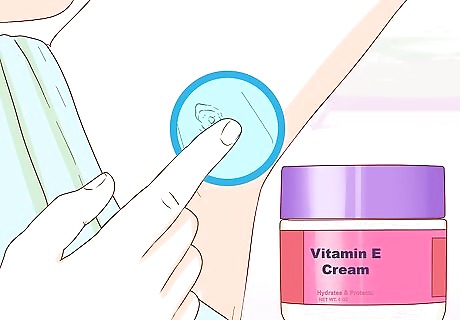
Spread a vitamin E cream on your scars for a natural alternative. Purchase a skincare cream that contains vitamin E at a local pharmacy or drugstore. Apply a small dollop of vitamin E cream to each of your scars once daily for 2-3 weeks or until the scar tissue lightens. Speak to your doctor before using a vitamin E cream if you’re already using an exfoliator or another scar-treatment cream. Studies have shown that vitamin E creams have mixed results. In some cases, vitamin E creams significantly lighten the appearance of scars, while in other cases, they have little to no effect. Vitamin E creams can have mild side effects, including slight itching and a mild rash.
Receiving Medical Treatments
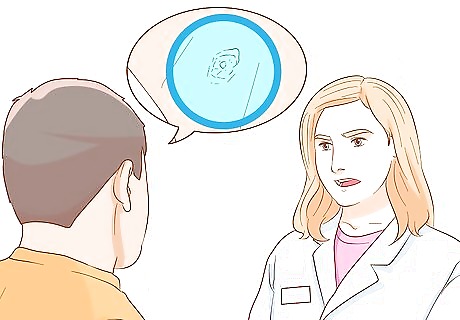
See a dermatologist if your boil scars don’t clear up with treatment. If you’ve tried a handful of over-the-counter treatments and they haven’t done much to lighten your boil scars, it’s time to see a doctor. Visit a dermatologist and tell them how long you’ve had the scars. Also, describe what kinds of treatments you’ve used already. The doctor will inspect your scars and may take a small skin sample for lab analysis. In some cases, you may need to visit your general practitioner first and ask for a referral to see a dermatologist. Dermatologists are used to dealing with all kinds of scars, including scars from boils. The doctor should be friendly and encouraging, and can help relieve whatever worries you may have about the appearance of your scars!
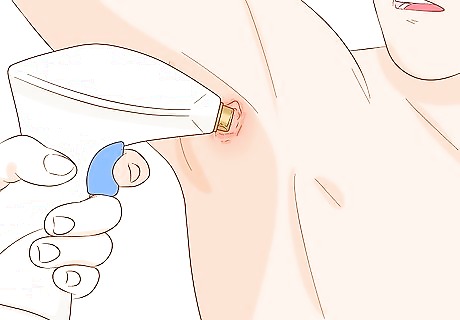
Ask the doctor about laser treatment to lighten scars. If your boils were particularly large or deep, they may have left deep scars made of thick scar tissue. These scars will probably not respond well to most over-the-counter treatments. However, a dermatologist can use highly focused laser beams to resurface your skin by wearing away the scar tissue. In some cases, laser treatment may erase 100% of visible scar tissue! For this reason, laser treatment is a popular option. Depending on the severity of your boil scars and the number that you’d like treated, laser treatment can cost anywhere from $200-$2,000 USD. Laser treatment can be a little uncomfortable, although you’ll be given a topical anesthetic in most cases. You may still feel a burning or itching sensation. The treatment may also create additional scarring. The post-treatment recovery period takes from 3-10 days. Before performing any laser treatment, the dermatologist will ask about your medical history. They may also prescribe you an antiviral medication to prevent viral infection following the surgery.
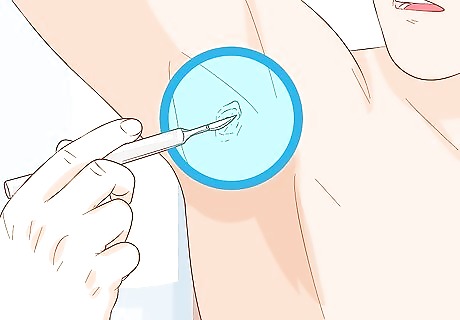
Receive minor skin surgery to remove the boil scar tissue. Dermatologists and skin surgeons often perform minor surgeries to remove persistent scar tissue. Surgeries are most common in the case of a few separate boils that have each caused large scars. The doctor may choose to use a procedure called a punch excision, in which they remove individual boil scars and stitch or graft the skin back together. While surgery may seem scary or unpleasant, it’s a reliable and safe way to clear up boil scars! Minor skin surgeries are typically outpatient surgeries, meaning you’ll be given a local anesthetic and released from the hospital shortly after the surgery is finished. The surgery won’t hurt, and the post-surgery recovery period should only take 2-3 days. If the surgery isn’t covered by your medical insurance, it could cost between $300-$1,000 USD. Scar-removal surgery is typically an outpatient surgery, although you may be given full anesthesia. Ask the doctor if it’s OK to eat and drink the day of your surgery.

Request a chemical peel to clear boil scars from a large area of skin. Dermatologists often use chemical peels to remove stubborn burn tissue. The treatment involves applying a high-potency acid to scar tissue for a short period of time to wear away the scars and lighten their appearance. Patients typically receive a topical anesthetic, so the procedure should be painless. If the scars from your boils are numerous or cover a large area of your body, ask the dermatologist if a skin peel is right for you. There is some risk of skin damage or scarring in the case of chemical peels. Talk through the risks and possible side effects with your doctor before you agree to a chemical peel. Scars left by boils typically aren’t very deep. This means that you’ll likely need a relatively minor skin peel, which may cost as little as $150-$300 USD. The recovery period for a skin peel typically lasts about 7-14 days. Your doctor will direct you to keep the skin moist and wear sunscreen for 1-2 weeks.
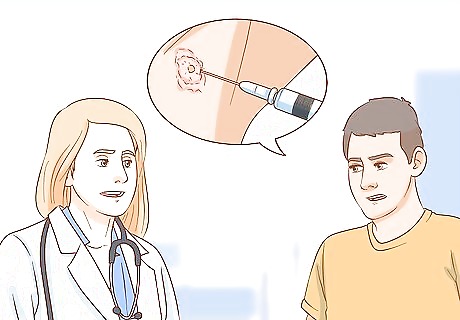
Talk to your doctor about corticosteroid injections to flatten scars. If you have highly textured, raised boil scars, your dermatologist may give you corticosteroid injections to reduce the scar’s inflammation and flatten the tissue. In most cases, your doctor will give you 3 or 4 separate injections each spaced out by about 4–6 weeks. The injections cost about $100 USD in total, but most insurance companies will cover the cost. The injections shouldn’t hurt any more than receiving a vaccination. If you find them uncomfortable, ask the doctor for a local anesthetic. If the boil scars respond to the treatment well, the dermatologist may continue the injections for a few months. In some cases, people’s bodies don’t respond well to the steroid injections. If your doctor sees signs of side effects, they may decide to discontinue the steroid treatment. If a corticosteroid injection doesn’t work, you can also try getting an intralesional fluorouracil injection instead. However, it may increase the recurrence of boils by 47%.
Covering and Protecting the Scars
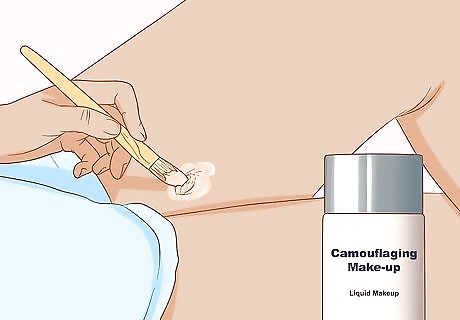
Apply camouflaging make-up to cover up boil scars. If you’d rather not try surgical or medical procedures, your best bet may be to cover up the scars. You can purchase over-the-counter camouflaging make-up at drugstores or pharmacies. Try out 3-4 different colors until you find one that closely matches your own skin tone. Use a makeup brush to apply the makeup over your boil scar until the scar is no longer visible. If you apply facial makeup as part of your daily routine, blend the camouflage makeup in with your regular foundation. Unlike ordinary make-up, camouflaging make-up stays in place for 2–3 days and completely covers up facial scar tissue. Camouflaging make-up works especially well for 1 or 2 mild boil scars on your face. Also use camouflage make-up for boil scars on your neck, hands, or arms.
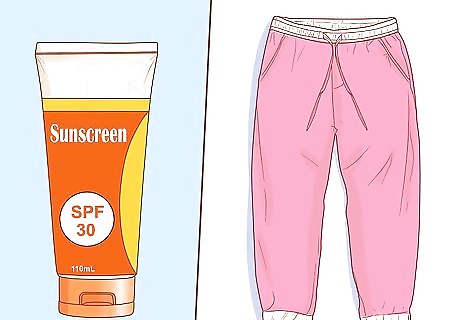
Wear sunscreen or protective clothing to protect the scar from sunlight. Scar tissue is very sensitive to UV rays from the sun. If you spend substantial amounts of time outside—more than 30 minutes per day—your scar will be darkened by the sun’s rays. So, slather sunscreen over your boil scar at least 20 minutes before leaving your home for the day. If you prefer not to use sunscreen, wear loose, sun-protective clothing to keep the light off your scar. For example, if you have boil scars on your legs, wear loose-fitting linen pants that won’t irritate the scar tissue but that will protect the boil scars from harmful sun rays. Wear a broad spectrum sunscreen of at least SPF 50 that protects against UVA and UVB rays to adequately protect your boil scar from sun damage. If you’re going to be in the sun for more than 3–4 hours, re-apply the sunscreen as often as the packaging directs. If you have boil scars on your face or neck, you could also try wearing a large-brimmed hat to cover up the scar tissue and protect it from the sun.
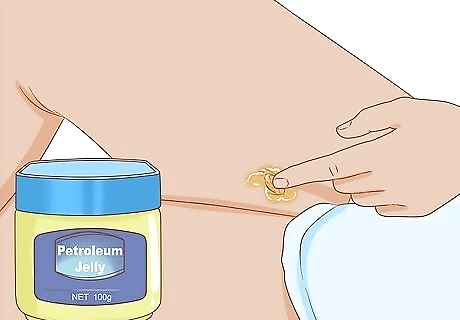
Keep your scar tissue moist by applying petroleum jelly daily. Smear a quarter-sized dollop of petroleum jelly onto your boil scars once a day. In addition to softening your boil scars, the jelly will protect them from being damaged and dried out. This is especially important to do in the first month after your boil has cleared up so that your skin can regenerate. Purchase petroleum jelly at any pharmacy, drugstore, or large grocery store.















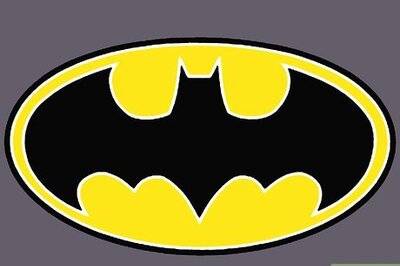
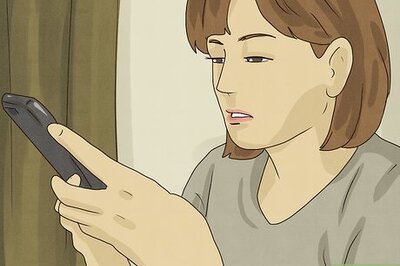


Comments
0 comment